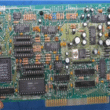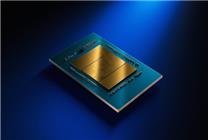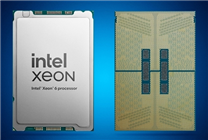Intel’s Granite Rapids-WS Xeon Processors: A Game-Changer for High-End Workstations
Key Highlights:
- The upcoming Granite Rapids-WS Xeon processors mark Intel’s significant advancement in high-end desktop and workstation technology, featuring 86 cores and 172 threads.
- This new product series is part of Intel’s strategy to compete effectively with AMD’s Threadripper series.
- Enhanced platform capabilities, including support for DDR5 memory and numerous PCIe Gen5 channels, set a new benchmark for professional computing power.
Introduction
Intel is poised to revolutionize the high-end desktop (HEDT) and workstation landscape with its upcoming Granite Rapids-WS Xeon processors. As Intel intensifies its rivalry with AMD’s Threadripper series, engineering samples have recently surfaced, indicating promising features that could redefine performance in intensive computing applications.
Engineering Samples Revealed
While the Granite Rapids-WS series has yet to see an official launch, initial engineering samples have reached evaluation partners, notably appearing in the OpenBenchmarking database. One notable model identified, known as "Intel 0000," boasts an impressive configuration of 86 cores and 172 threads, alongside a base clock speed of 2.1 GHz. These specifications hint that this is an early engineering prototype, suggesting further enhancements may still be on the horizon.
Platform Specifications
The testing framework for these processors includes Intel’s "GNR-WS" reference evaluation platform, equipped with a robust 512GB of DDR5 memory, an NVIDIA RTX 3090 graphics card, and a substantial 1TB storage device. This configuration is designed to maximize performance, showcasing the potential of the Granite Rapids-WS in demanding computational tasks.

Core Configuration Comparison
The core arrangement of Granite Rapids-WS aligns closely with Intel’s existing Xeon 6700P server line. The top-tier models from this lineup, specifically the Xeon 6787P and 6788P, also feature 86 cores and 172 threads with base frequencies ranging from 2.0 to 2.1 GHz, complemented by a thermal design power (TDP) of 350W. Notably, the cache capacity stands out at a remarkable 336 MB.
While Intel closes the gap on AMD’s Threadripper 9000 series in core count—with AMD boasting 96 cores compared to Intel’s 86—the competition is heating up.
Dual-Tier Workstation Strategy
Both AMD and Intel categorically segment their workstation offerings into two distinct tiers. Intel’s latest W890 platform will accommodate the Granite Rapids-WS Xeon processors, presenting dual-level configurations. The mainstream level supports four-channel DDR5 memory and 80 PCIe Gen5 channels, while the elevated tier enhances this with eight-channel DDR5 support and 128 PCIe Gen5 channels. Additionally, the W890 chipset features 24 PCIe Gen4 channels and 8 dedicated GMI channels, indicating a marked improvement over previous iterations.
Upgrade Path Considerations
An interesting aspect of the W890 platform is its new LGA 4710 socket. This design signals a smooth upgrade path for AMD users transitioning from the Threadripper 7000 to the new 9000 series, while Intel users will face a more comprehensive upgrade process. Migrating to the Granite Rapids-WS demands a complete platform overhaul, which could influence future purchasing decisions for enterprises and professionals alike.

Conclusion
As Intel gears up for the launch of its Granite Rapids-WS Xeon processors, the implications for high-performance computing in professional environments are significant. With formidable core counts, advanced memory configurations, and a robust PCIe structure, these processors promise to enhance productivity and streamline workflows. As the competition with AMD intensifies, the future of workstation computing appears set for transformative advancements.
The upcoming Granite Rapids-WS series is more than just a product launch; it’s an essential move in Intel’s strategy to reclaim leadership in the HEDT and workstation market. As evaluations continue and feedback rolls in, it will be intriguing to see how these advancements are embraced by professionals relying on high-performance systems.
Stay tuned as we cover further developments and insights regarding Intel’s Granite Rapids-WS Xeon processors.







